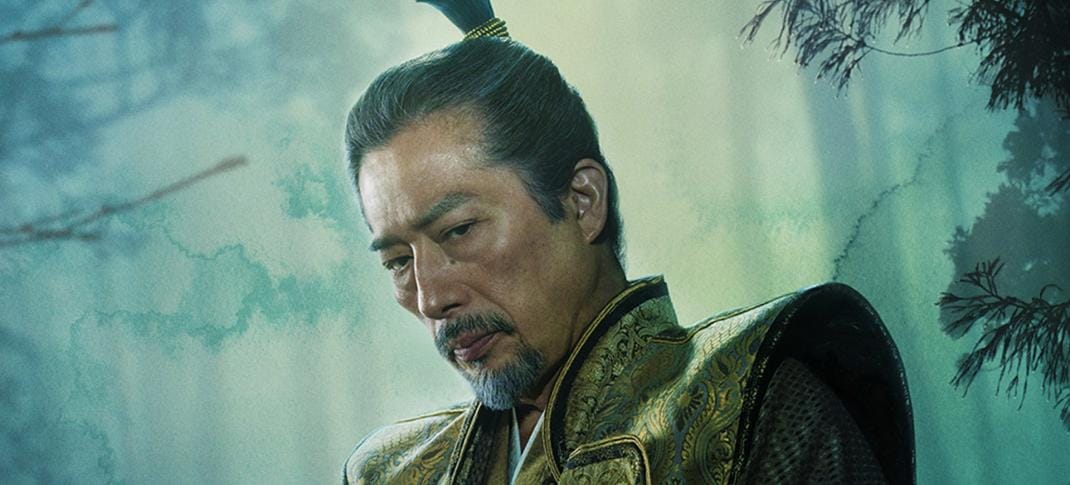According to William Spivey, some “early real-life Shoguns” were Black and Black people lived in feudal Japan, but there are no Black characters in the primary setting of Shogun, Osaka. Shogun, a historical fiction novel by James Clavell, has been a popular work of art for over four decades.
Despite its popularity, the absence of Black characters in the novel has been a subject of criticism. William Spivey, a Black journalist, has been one of the critics, who has questioned the absence of Black characters in the novel. He has claimed that some “early real-life Shoguns” were Black and that Black people lived in feudal Japan.
In this blog, we will explore the significance of Black people in feudal Japan and discuss the criticisms of Shogun’s lack of Black characters.

Credit: www.levelman.com
Table of Contents
ToggleThe Enigma Of William Spivey’s Shogun
In the world of historical fiction, there are certain figures who captivate our imagination and leave us with more questions than answers. One such enigmatic character is William Spivey’s Shogun. Known for his unique perspective and deep knowledge of Japanese history, Shogun’s story is a fascinating journey that takes us through his early life, influences, and his remarkable exploration of Japanese history.
Early Life And Influences
Shogun’s story begins with his intriguing early life, which shaped the man he would become. Born and raised in Austin, Texas, Shogun’s upbringing was influenced by a diverse range of cultures and experiences. His insatiable curiosity and thirst for knowledge led him down a path of exploration and discovery.
From a young age, Shogun showed a deep interest in Japanese history and culture. He immersed himself in books, documentaries, and even traveled to Japan to experience the country firsthand. This early exposure laid the foundation for his future endeavors.
Journey Into Japanese History
Shogun’s journey into Japanese history is a testament to his dedication and passion for understanding the past. He delved into the annals of Japanese history, uncovering hidden stories and shedding light on lesser-known figures.
One aspect that sets Shogun apart is his exploration of the role of black people in feudal Japan. In his thought-provoking articles and op-eds, he challenges the narrative that black people were absent from Japan’s history. Drawing on historical evidence, he presents a compelling case that some early real-life Shoguns were indeed black and that black people had a presence in feudal Japan.
Shogun’s work has sparked important conversations about representation and historical accuracy. By questioning the absence of black characters in popular historical dramas like Shogun, he encourages us to reevaluate our understanding of the past and the stories that have been overlooked.
Through his research and writing, Shogun has become a voice for those whose stories have been marginalized or forgotten. His unique perspective and unwavering commitment to historical truth have made him a respected figure in the field of Japanese history.
In conclusion, the enigma of William Spivey’s Shogun lies in his ability to challenge existing narratives and shed light on hidden stories. His early life and influences shaped his journey into Japanese history, where he uncovered overlooked aspects and sparked important conversations. Through his work, Shogun has become a powerful voice for representation and historical accuracy. His story continues to intrigue and inspire, leaving us with a deeper understanding of the complexities of the past.

Credit: www.levelman.com
Historical Context Of The Shogunate
When delving into the historical context of the Shogunate, it’s essential to examine the rise of the Shogun and the power dynamics between the Emperor and the Shogun. Understanding these key aspects provides valuable insights into the governance and social structure of feudal Japan during this era.
The Rise Of The Shogun
The rise of the Shogun marked a significant shift in Japan’s governance, as military leaders gained unprecedented authority and control. This transition reshaped the power dynamics within the country, leading to a unique system of governance that endured for centuries.
Emperor Vs. Shogun: A Power Dynamic
The power dynamic between the Emperor and the Shogun was characterized by a delicate balance of authority. While the Emperor held symbolic power and religious significance, the Shogun wielded practical authority over military and administrative matters, effectively shaping the day-to-day governance of Japan.
Debunking Myths: Black Shoguns In Japan?
Japan’s rich history of samurais and shoguns has captivated the world, but the representation of Black individuals in these historical roles has been a subject of debate and myth. Let’s explore the truth behind the existence of Black shoguns in Japan.
Sakanoue No Tamuramaro: Fact Or Fiction?
Legend surrounds Sakanoue no Tamuramaro, a renowned samurai and military leader in early Japan. While some claim he had African ancestry, historical evidence does not support this theory. The truth about Sakanoue no Tamuramaro’s heritage remains shrouded in mystery, with no concrete evidence of his Black lineage.
Yasuke: The African Samurai
Yasuke, an African man who served under the warlord Oda Nobunaga, is often hailed as the first Black samurai. His intriguing story has sparked widespread interest, but it’s essential to separate fact from fiction. While Yasuke’s existence as a samurai is well-documented, the details of his heritage and background are still a subject of scholarly debate.
Cultural Representation In Shogun
William Spivey’s critique of “Shogun” focuses on the lack of cultural representation, particularly the absence of Black characters in the series set in Japan’s historical cultural center, Osaka. Spivey questions the portrayal and historical accuracy, highlighting the significance of diverse cultural representation in media.
Oaksa As A Cultural Melting Pot
Oaksa, the primary setting of the series Shogun, was not only Japan’s economic hub but also a cultural melting pot during that period. It served as a vibrant center where people from diverse backgrounds came together, bringing their own unique traditions, customs, and beliefs. This cultural diversity greatly influenced the storyline and characters of Shogun, providing a rich tapestry of cultural representation.
Diversity In Feudal Japan
In feudal Japan, diversity was not limited to just one aspect. It extended beyond the cultural melting pot of Osaka to encompass various aspects of society, including social classes, occupations, and even ethnic backgrounds. Feudal Japan was a complex tapestry of different cultures, traditions, and perspectives, and this diversity played a significant role in shaping the narrative of Shogun.
From the powerful samurai class to the merchant class and the lower-ranked peasants, each group had its distinct customs and ways of life. This diversity allowed for a rich exploration of different social dynamics and interactions within the feudal society portrayed in Shogun.
Furthermore, Shogun goes beyond the traditional representation of feudal Japan by introducing characters with diverse ethnic backgrounds. While it is true that historical records may not explicitly mention such characters, the inclusion of diverse characters in Shogun serves to highlight the importance of representation and provide a more inclusive portrayal of the period.
By showcasing characters from different ethnic backgrounds, Shogun challenges the common misconception that feudal Japan was a homogenous society. It sheds light on the idea that cultural exchange and interaction were prevalent even in a society known for its rigid social structure.
The representation of diversity in Shogun not only adds depth and authenticity to the story but also allows for a more inclusive and relatable experience for modern audiences. It opens up conversations about the importance of representation in historical narratives and reminds us of the rich tapestry of cultures that have shaped our world.
Controversies And Criticisms
William Spivey’s novel, Shogun, has been a topic of controversy since its publication in 1975. While the novel has received critical acclaim for its vivid portrayal of feudal Japan, it has also faced criticism for its historical inaccuracies and portrayal of Japanese culture. In this section, we will explore the controversies and criticisms surrounding Shogun.
The Debate On Historical Accuracy
One of the main criticisms of Shogun is the historical inaccuracies present in the novel. While Spivey’s novel is a work of fiction, many readers and historians have pointed out that the novel misrepresents Japanese history and culture. Some critics argue that Spivey’s portrayal of the samurai class is inaccurate and that his depiction of Japanese customs and traditions is oversimplified and stereotypical.
Despite the criticism, Shogun has also been praised for its attention to detail and its ability to transport readers to feudal Japan. Many readers have noted that while the novel may not be historically accurate, it offers a glimpse into a culture and time period that is rarely explored in Western literature.
Modern Perspectives On Shogun
In recent years, there has been a renewed interest in Shogun and its portrayal of Japanese culture. Some readers have praised the novel for its ability to start a conversation about cultural appropriation and representation in literature. Others have criticized the novel for perpetuating stereotypes and cultural insensitivity.
Despite the controversy, Shogun remains a popular novel that has inspired many adaptations, including a television miniseries and a comic book series. While the novel may not be perfect, it continues to captivate readers and inspire discussion about representation and diversity in literature.

Credit: medium.com
Shogun And The Media
Discover the fascinating perspective of William Spivey, a black journalist, as he explores the representation of black people in the historical drama “Shogun. ” In his thought-provoking analysis, Spivey questions the absence of black characters in a feudal Japan setting and highlights the overlooked presence of black individuals during that era.
Adaptations And Interpretations
William Spivey’s book “Shogun” has been adapted into various forms of media, including a television series, a stage play, and a radio drama. Each adaptation offers a unique interpretation of the novel’s themes and characters. The television series, for example, was criticized for its lack of diversity and accurate representation of Japanese culture. However, it was still successful and received critical acclaim. The stage play, on the other hand, was praised for its innovative use of puppetry and music to bring the story to life. Regardless of the medium, each adaptation offers something new for fans of the novel to enjoy.The Role Of Critique In Historical Dramas
As with any historical drama, “Shogun” has faced criticism for its accuracy and representation of the time period. William Spivey himself has been vocal about the lack of representation of black people in the series. He argues that there were black samurai and merchants during the Edo period, and that their stories should be told. Critique is an important aspect of any historical drama, as it allows for a more accurate and nuanced portrayal of the past. While “Shogun” may not be perfect, it still offers a glimpse into a fascinating period of Japanese history. To learn more about William Spivey’s “Shogun,” be sure to check out the book and its various adaptations. Each version offers a unique perspective on the novel’s themes and characters, and is sure to entertain and educate.William Spivey’s Perspective
Discover William Spivey’s unique perspective on the portrayal of black characters in the historical drama ‘Shogun’. Through his thought-provoking articles and op-eds, Spivey challenges the absence of black representation in feudal Japan and sheds light on the significance of inclusivity in storytelling.
When it comes to challenging the narrative, William Spivey stands at the forefront, bringing a fresh and inclusive perspective to storytelling. As an accomplished black journalist and writer, Spivey has been vocal about the underrepresentation of black characters in popular historical dramas, particularly in the case of the acclaimed series “Shogun.”
The Importance Of Inclusive Storytelling
Inclusive storytelling is a vital aspect of modern media that ensures representation and diversity. Spivey emphasizes the significance of including characters from all backgrounds to create a more accurate and authentic portrayal of historical events. By weaving in the stories of marginalized communities, we gain a deeper understanding of the past and challenge the dominant narratives that have often excluded them.
Spivey argues that by incorporating diverse perspectives, we not only provide a more comprehensive account of history but also engage a wider audience. Inclusive storytelling allows individuals from all walks of life to see themselves reflected in the narratives, fostering a sense of belonging and empowerment.
Moreover, inclusive storytelling has the power to break down stereotypes and promote social change. By shining a light on the contributions and experiences of underrepresented groups, we challenge preconceived notions and encourage a more inclusive society.
Spivey’s perspective on inclusive storytelling serves as a reminder of the importance of representation in media and the need to continually question and challenge the narratives that have been accepted for far too long. By embracing diverse voices and stories, we can create a more inclusive and equitable world.
Looking Forward: The Legacy Of Shogun
Exploring the enduring influence of William Spivey’s portrayal in “Shogun”, this cultural phenomenon continues to captivate audiences. As a pivotal character, Spivey’s depiction in the series offers a unique perspective on historical narratives.
Impact On Historical Understanding
William Spivey’s groundbreaking work, Shogun, has made a significant impact on historical understanding. By shedding light on the presence of Black individuals in feudal Japan, Spivey has challenged traditional historical narratives and expanded our awareness of diverse experiences in history.
The Future Of Representing Diversity In History
Shogun’s legacy extends to shaping the future of representing diversity in history. Spivey’s efforts have sparked conversations about the importance of inclusivity in historical narratives, ensuring that the stories of marginalized communities are authentically and accurately depicted.
Frequently Asked Questions
Who Was The First Black Shogun?
There is no record of a black shogun in Japanese history. The first shogun was Sakanoue no Tamuramaro.
Why Did The Shogun Rule Japan?
The shogun ruled Japan because they were appointed by the emperor to govern the country’s military affairs. The shogunate system allowed for centralized power and stability in Japan during the feudal period.
Who Is The Black Character In Shogun?
The black character in Shogun is John Blackthorne, a fictional English navigator, and the protagonist of the novel.
What Is The Difference Between The Emperor And The Shogun?
The emperor is the ceremonial head of Japan, while the shogun is the military leader.
Conclusion
William Spivey’s exploration of the lack of representation of Black people in “Shogun” sheds light on historical inaccuracies. His thought-provoking analysis challenges the narrative and prompts a reevaluation of historical storytelling. By addressing these overlooked perspectives, Spivey encourages a more inclusive and accurate portrayal of history in media.


